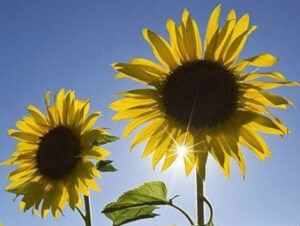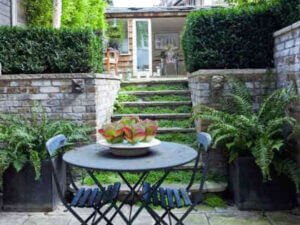There’s no denying that the presence of water has its benefits to our peace of mind, whether it’s a Sunday morning swim in the pool or a weekend spent at the beach. Riverside houses fetch twice the price, lakeside lodges charge a fortune for tourist breaks and if your hotel overlooks the ocean, well you’re in the money. People have had a fascination with water since time immemorial and it’s made its way into our homes and gardens. Not only is it pleasing, aesthetic and relaxing to bring water into our daily lives, but it can have endless benefits to your environment and your garden itself…
Temperature Control
Some of the most beautiful plants are often some of the most vulnerable. There are many things that can affect and stunt the growth of greenery, ranging from poor quality soil to wind exposure and temperature. The evaporation of water from damp surfaces, puddles and even large bodies of water, can have a cooling effect on the surrounding area. Temperature is drawn from the air in the same way that human sweat works. Waterfalls will also purify the air and remove allergens and pollens, something a lot of people wish for during the warmer months.
Wildlife
Large bodies of water are not natural features in residential areas, so wildlife will flock to them on a regular basis. Domestic animals, birds, hedgehogs, badgers, foxes and other wildlife will visit ponds and pools for bathing and drinking. Not only will this be a welcome addition to the average home garden, but the presence of wildlife can help promote the spreading of seeds and health of greenery. Particularly important are the insects which will gather around bodies of water, for germination.
It’s also a myth that mosquitoes will be attracted to your pond. A well aerated and designed pond is no good for mosquitoes, whose larvae require still and stagnant water to thrive. Your properly flowing pond is the complete opposite of what they want, a neglected birdbath would be more suitable.
Fertiliser
The debate about chemical fertilisers and pesticides won’t be answered here, it’s been raging for years and will continue to rage for years to come. Whilst ponds don’t directly counteract the effects, they do produce an excellent natural alternative. The sludge that collects in the bottom of ponds is bursting with nutrients and can be used as a viable topical alternative to fertilisers, applied locally around the base of plants that need a helping hand. Decaying matter from leaves, excess food for your pond fish and the fish dropping themselves are all useful in the same manner.
Variety of flora
Bringing a body of water into your garden will inevitably give you the opportunity to introduce an increased variety of flora. Whether you’re cultivating a wildflower meadow, a beautifully architectured country garden or a compact urban garden; it’s always going to be your choice of plants and flowers that make it. From water lilies to Nymphaea gigantica, frogbit to parrot feather; the range of plants available to you with water nearby is amazing.



2 Comments. Leave new
[…] true. The ability of your garden pond to sustain aquatic life and health isn’t dependent upon its depth. Sure, you can’t dig […]
[…] already covered the benefits of garden ponds and pools, but bringing them into a tropical environment opens up another world of possibilities. The sound […]